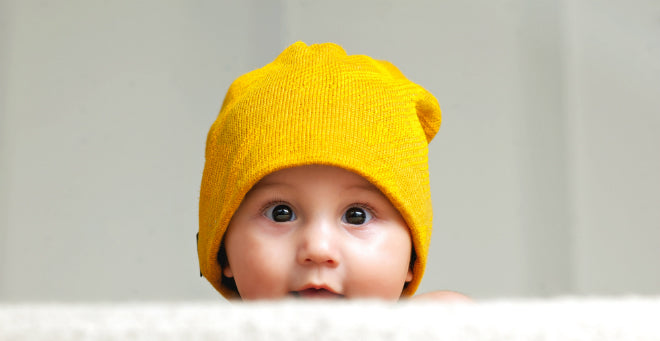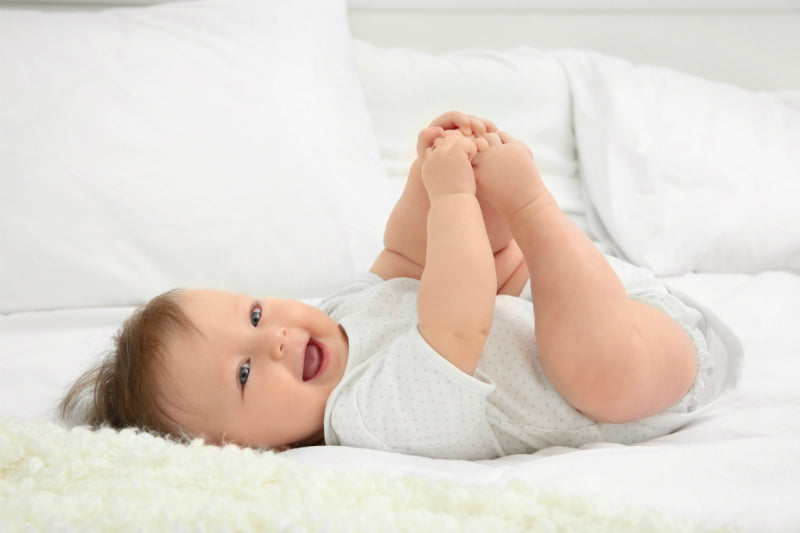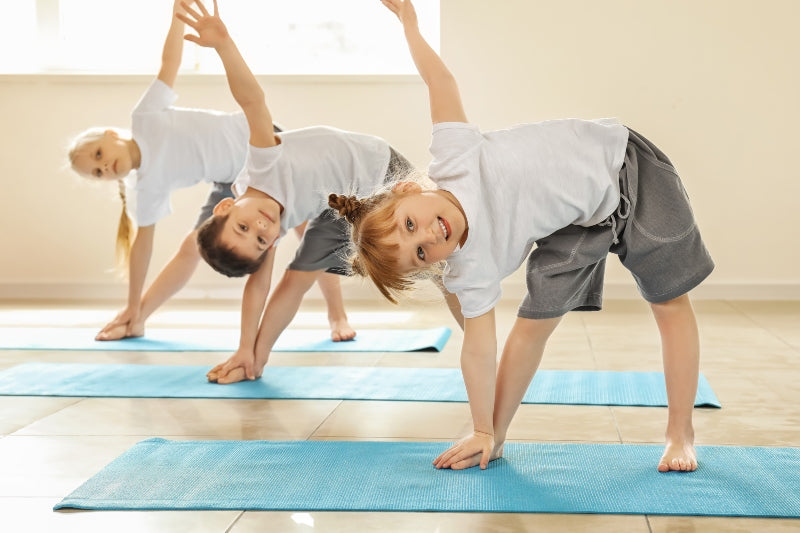" Well equipped for cool spring days "
Spring beckons with its warm rays of sunshine for the first longer outings of the year. Long walks with the baby in the pram or baby carrier are healthy for parents and children alike. However, the weather is unpredictable this early in the year and sudden drops in temperature or strong winds can take you by surprise. What the cold does to the little ones, why warm baby hats are important now are important now and what else you should have with you when out and about in spring.
Why is a baby hat so practical?
Spring often tempts us not to dress warmly enough. The dark and cold winter months are finally over. Even low temperatures no longer seem so icy because we are used to worse. Our hats get caught on the hook more often, which makes our hair happy in the first place.
For us adults, a little chill is generally not a problem either. Our body knows how to help itself and heats up from the inside to combat the external cold. Although the immune system weakens under the influence of cold, it is usually still strong enough to defend itself against pathogens. Warm hats are therefore hardly necessary in spring.
The situation is completely different for babies. Their thermoregulation does not yet work so well and needs a lot of support. Warm children's clothing is therefore also a must in spring. This definitely includes a baby hat. It allows the child's temperature to be regulated quickly as it can be put on and taken off quickly. If a spring storm suddenly breaks out on the way, the hat goes on the head. If there is no wind and the sun is shining, the children's hat disappears into the changing bag or diaper bag.

The beanie myth
Due to some misunderstandings and the misinterpretation of studies, hats are still portrayed as the most important item of clothing when temperatures are low and the wind is blowing. However, it is not true that the majority of body heat is lost through the head. It's just that we have very fine sensors for temperature differences on our heads. We therefore feel the cold particularly clearly on our face and scalp.
This is all the more true for babies. They come from a warm environment without any temperature fluctuations. They first have to get used to this during their first few months in the world. This is related to the regulation of their own body temperature. It takes around three months for this to work efficiently. Hats are therefore an important aid for babies to keep their bodies at an appropriate temperature.

Hats are an important accessory for babies
In addition, small children have a relatively large head. In proportion to the rest of the body, it has a larger surface area than that of adults. This means that little ones also lose more heat through their heads. Hats are therefore indispensable as children's clothing.
With sparse hair, a baby hat provides additional protection from the cold, wind and sunlight. In spring, the sun can shine quite strongly without generating heat. Sunburn on the ears or scalp can also be easily prevented with a hat.
What makes a good hat for babies?
Basically, baby hats must be the right size. They must not constrict, but on the other hand they must not slip around loosely either. If a gust of wind can simply sweep the hat away, it is definitely too big. As children grow so quickly, their clothing is usually designed to be flexible. With baby hats, this means that you can turn them inside out once or twice. This makes it smaller and fits more snugly.
However, only roll the baby hat up so far that the ears are still covered. The small ear canals are very sensitive to wind. A middle ear infection is also extremely painful and should be avoided at all costs. Especially after a bath, you should make sure that your hair and ears are dry before you set off for a walk. To be on the safe side, you can wear a thin cotton hat even on warm summer days.
This brings us to the material of hats for babies. The general rule here is to avoid synthetics. It has the worst properties in terms of air permeability and sweat absorption. In addition, plastic generally has no place on a baby's head. Virgin wool can be very warm. Although baby hats made of merino wool are no longer scratchy like the knitted hats of grandmother's day, woolly hats are more suitable for winter than for spring. A cotton hat is ideal for the transitional period. It insulates against both heat and cold, absorbs perspiration well and is breathable. If you are concerned about chemicals in cotton, it is best to choose products made from organic cotton.

Make sure that the hats are not made of synthetic materials
Further tips for healthy children
If you are planning an outing with the family, you should be prepared for a sudden change in the weather. In addition to a children's hat, a complete set of children's clothing should therefore also include a windproof jacket that ideally even repels water. Otherwise, a rain jacket is a must. If your baby is still mainly lying in the baby carriage, a thick baby blanket is a must. A sheepskin blanket provides comfort on cold days. For safety, you can give your child a soft toy in the pram. Check regularly on the way to make sure it is not getting too warm.
Hot tea or hot chocolate in a thermos flask warms from the inside when you are out and about. Hold the filled cup in your hand to warm your fingers. If you are still breastfeeding, you should pay more attention to your own health anyway. A balanced diet rich in vitamins, as well as fresh air and exercise, are the best guarantee of staying healthy through the cold season. Your baby receives great support for its own immune system through milk. Breastfeeding can therefore make sense beyond the first year of life.
Incidentally, the fresh spring air is good for the mucous membranes. These are put to the test during the cold season as they are constantly exposed to dry heated air. So make sure you take the first warm days of the year as an opportunity for longer walks. Properly equipped, it will be a soothing pleasure for you and your children.











